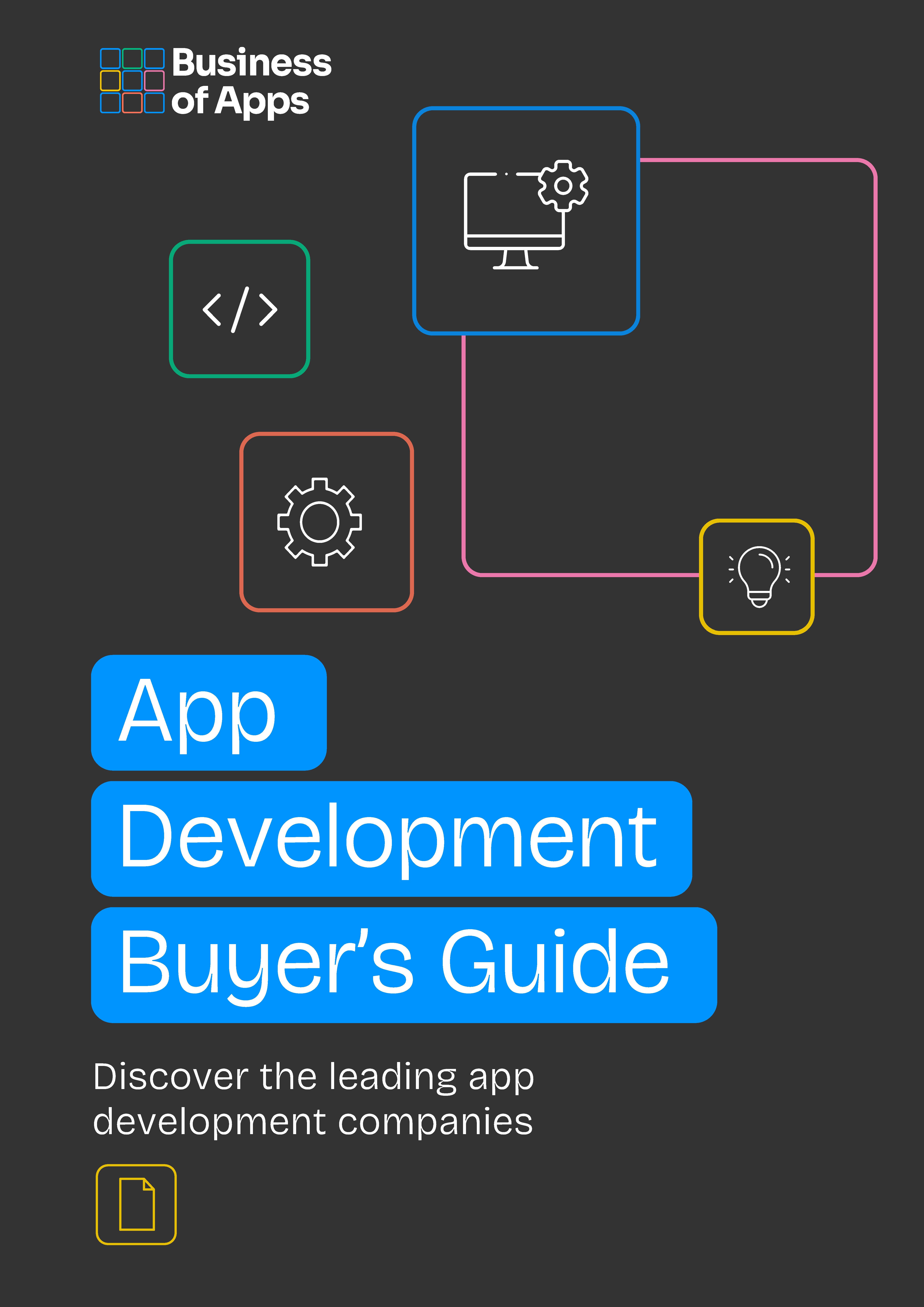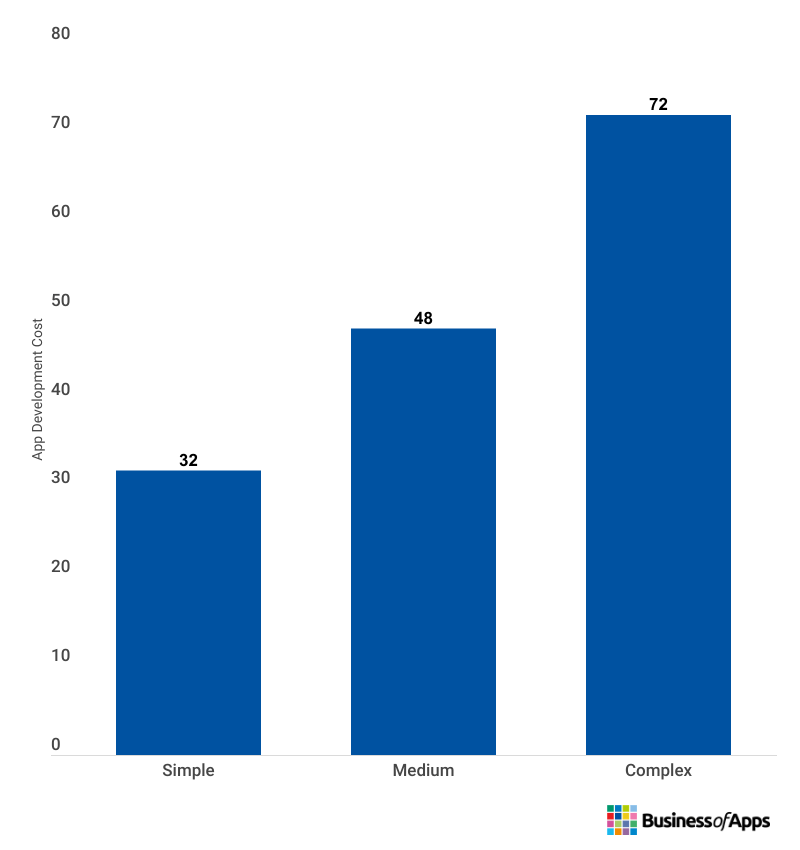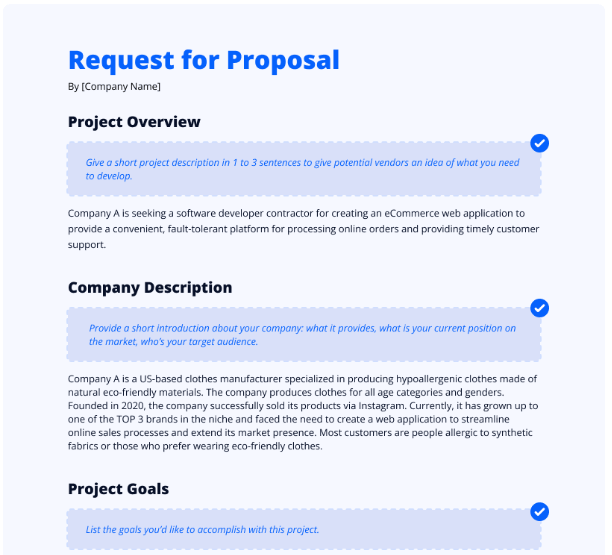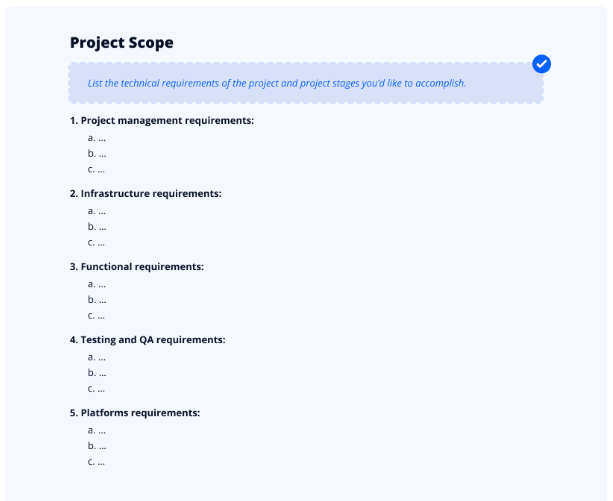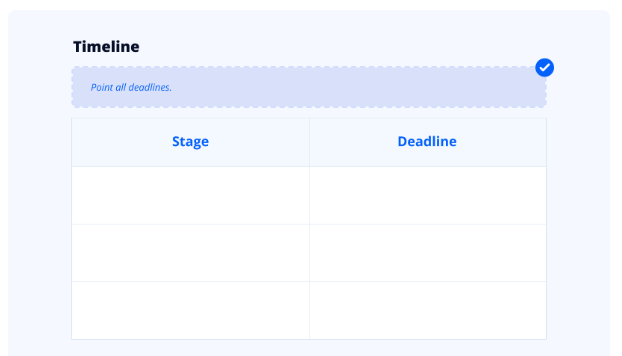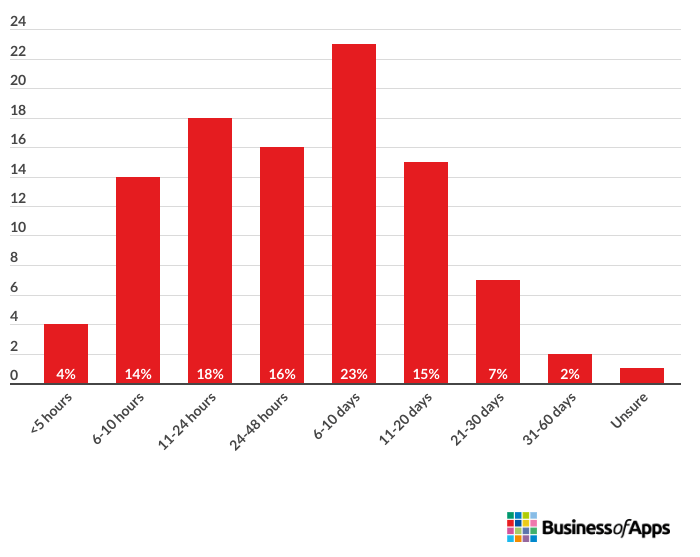When developing a new app or upgrading app functionality, organizations often choose to work with app development vendors. But finding the best or most appropriate ones relies on a proper tender process in the form of an app development RFP (Request for Proposal). Also referred to as the RFP development process, this tender process requires organizations to create a clear and precise mobile app RFP document. And with an RFP mobile application at hand, vendors can check if they match these requirements and respond in the form of a completed mobile app development proposal.
Creating an app development RFP is the best way to attract app development vendors to bid for a project. But there is a need to plan for completion way ahead of any RFP development process. Doing so can lay the foundations for a successful bid and strong working partnership. So what’s an RFP exactly? By setting out a clear project scope, delivery timeline, and an outline of project requirements, an app development RFP allows its authors and prospective vendors to connect over a project. And with a well-planned and completed mobile app development proposal, organizations and development vendors can increase their chances of a successful outcome.
It’s also worth noting that an RFP mobile app proposal template can also aid with data gathering while minimizing any risk of errors. When there’s better clarity between parties, they can look forward to gaining higher and more consistent ROI. So, to understand how to write an app development RFP, this guide will answer the question of what’s an RFP while offering an app proposal template to support the RFP mobile application development process.
Featured App Developers
App development RFP definition
An app development RFP (Request For Proposal) is a document that sits at the heart of the mobile app development process. The app development RFP helps organizations and potential vendors to understand the requirements of an app development project and plan their approach. But also, using an app development RFP promotes transparency and accountability, and offers a clear roadmap of correct procedures to follow. And this increases the chances of a successful outcome.
As a key part of the app development process, an RFP lets an organization understand and clarify its objectives before they choose a development partner or vendor. For example, larger firms who want to achieve scale and profitability may want to attract Enterprise-level development companies. And, if they assign them, these development companies can work in different ways like using in-house staff or outsourcing resources. Such considerations are likely to have a big impact on the way the appointing organization works and also the success of the project.
App Development Buyer's Guide
Download our App Development Buyer’s Guide to get a full list of the best service providers on the market to choose from. You will also learn about types of app developers, different app development platforms, app developer locations, app development costs, how to select the right one for your business, as well as the questions to ask any of those companies you will be evaluating.
Deciding which approach is best, or which vendors to work with, is easier once a firm carries out an RFP development process. By clarifying objectives for both parties, an app development RFP can leverage the decision process and make it much easier to conclude. Plus, there are other types of documents used within a development process which we’ve clarified below:
- RFP (Request for Proposal): RFPs allow authors to clarify details of their requested products or services and invite vendors to match these requirements.
- RFI (Request for Information): An RFI is where authors are aware they have a problem but need an outside organization to help them understand how particular services or products can solve that problem.
- RFQ (Request for Quotation): With an RFQ, authors are looking to compare prices for products and services between vendors.
Benefits of an app development RFP
Along with clarifying project objectives and attracting appropriate development partners, an app development RFP brings several noteworthy benefits:
Saves time
An app development RFP is a convenient way to condense all project information into one document for bidders to review. And by outlining requirements in detail, RFPs save any time spent on such matters during negotiations, meetings, and discussions.
Attracts expertise
Each RFP app proposal must outline a clear set of needs and requirements. These can include specific attributes or levels of expertise in a provider. In their 2022 report, M. Saia.S, Nelson. NG, Young. SG, Parham.S, Vandegrift.M (2022) state “The RFP must be extremely precise and specific; it should outline all expectations for the web app, including its appearance and functionality”. So, to attract the right level of expertise, authors must put the work in to accurately define what they’re looking for.
Drives value
Receiving a mobile app development proposal in response to an RFP allows organizations to compare value propositions from several potential suppliers. By pitching their offers and stating their prices, vendors can highlight the value of their services and enable a more informed choice. But this is also based on companies following through and completing proposals since stats from QorusDocs suggest companies lose a median average of $725,000 from incomplete or unfinished RFPs.
Benefits both sides
Laying out a set of agreed terms and principles in a single document helps to define what steps and plans of action both entities should take. And doing so early on in the process can also help to avoid conflicts or differences of opinion later down the road after the project starts. Highlighting what should and shouldn’t be carried out keeps both parties on track to achieve the desired outcomes.
Strategies that can help improve the RFP development process
So, how can a firm kick off an RFP app development process and attract some interesting mobile app development proposals from the best providers? In this section, we’ll cover some useful strategies that can aid RFP mobile app preparation.
Preparation and planning
Before writing up an app development RFP, authors should have clarity on the perceived outcomes. For instance, will UX and UI focus on Human-Centered Design principles? Which services will your organization need from vendors? And what is your total budget?
Answering these questions and setting out intentions is an important step so that RFP authors attract the most suitable offers from the best vendors. For instance, M. Saia.S, Nelson. NG, Young. SG, Parham.S, Vandegrift.M (2022) also highlight how accessibility is a key consideration in any RFP. But they also suggest it’s wise to account for app accessibility as early as possible, ensuring compatibility with assistive technologies such as dictation software and screen readers.
Clarifying the budget
Creating an app development RFP takes time and resources. Plus, according to recent reports, it takes an average of 9 team members to complete an RFP. Organizations should consider available resources and assign stakeholders to activities. They should also use this to illustrate a full understanding of the total costs to run the project.
Bear in mind that the average cost of a complex app development process can exceed $70,000. And, in general, app development runs at an hourly rate. But determining the budget from the outset will help to focus on which vendors are offering the best price and value for their quotes.
US app development costs ($k)
Source: Salary.com
Defining success
Interested vendors need to understand what to expect from partnering on app development. So, setting out and defining any criteria, target metrics, and KPIs can help vendors to understand whether they meet your needs or not. Also, defining project success criteria to the external world can provide insights into the work ethics and culture of a firm, along with defining expectations of delivery.
A couple of examples to include in a definition of project success is how much, if any, flex an organization may be comfortable allowing on budgets, deadlines, and delivery dates. Firms may also want to ensure they define internal roles and responsibilities, setting out which stakeholders are on the project.
Determining the target audience
Audience targeting is becoming harder than it used to be, with app development currently experiencing a transition. Over 65% of developers are now looking for new strategies to target users using lookalike audiences and first-party purchase behavior targeting. With these roadblocks to overcome, it’s even more important to gain clarity on the target audience and plan how to attract them.
It’s also a good idea for organizations to clarify how they want an audience to engage with an app, what they want them to do, and how they want them to feel.
Choosing selection criteria
Organizations should outline the criteria on which they’ll select vendors. Adding a quantifiable value next to each one can help to highlight which criteria are priorities. For example, a selection may include aspects such as:
- Speed
- Quality
- Technology stack: Firms may have an existing tech infrastructure that requires compatibility with vendors. So, they should make sure to list any technical specifications or requirements from the outset.
- Specialism: Depending on the type of services needed, organizations may want to highlight the needed areas of expertise. That could include strong UI/UX, enterprise-grade software, or experience in developing a particular type of app such as native gaming apps.
Deciding on the vendor approach
Listing target vendors to approach can add a strategic dynamic to an approach that may increase the chances of finding the best one. Firms will know their projects best so may be better placed to understand which types of vendors could work best.
Within a target list of vendors, firms can include details of how they plan to approach these vendors. For example, are there particular platforms they use? Will it include a multi-channel approach via distribution networks and attendance at trade shows and conferences? Or, will you stick to digital channels including social media?
How to write an app development RFP
With a better sense of the background preparations and research needed to write a successful app development RFP, in the following section we provide an app proposal template for development. With references to a template from Lithuanian software development company JayDevs, this section highlights the core elements of an RFP mobile application form.
App development RFP template
The RFP is a two-sided document. It starts with the principal or lead organization creating their side of the RFP, to highlight their company information. And this follows with a request for information from vendors, who need to complete the requested information. The following template highlights the core elements of an RFP.
Screenshot of JayDevs RFP process – Questions to prompt RFP completion
Source: JayDevs
1. Executive summary and project overview
As shown in a screenshot of the template below, an app development RFP should start with a brief summary of the organization. This should then follow with a business case for the app, along with clarity on the proposed solution. The solution should include project milestones and objectives.
2. Company description and info
In this section, you can go into further depth and detail about your company. It’s your opportunity to show off your company and its achievements. Make sure to include some key headings such as:
- Your company’s mission statement
- Background history of the company
- The industry you operate in
- Corporate goals and objectives
- Current products and services
- Your target audience
- Your competitors and the state of the market
- Key stakeholders and personnel
3. Project description
This section should focus on offering all the details of the project you’re in need of help with. Subheadings should include the following:
- Summarize the problem: This is your opportunity to outline the problem you’re looking to solve. Alongside a description of the issue, including an outline of the vision for the project. How will it address the issues? Which tech platforms will you use? Who is it targeting? And which user personas or types of audiences will you target?
- List your goals and metrics: Include your short, medium, and long-term goals in this section, along with any other metrics for project completion. These should be SMART goals (Specific, Measurable, Achievable, Relevant, and Time-Bound) so you can highlight measurable outcomes.
- Describe the product’s functionality: Be as informative as possible about the app’s functionality. Include key features, user journey, and any wireframing, mockups, or prototypes.
- Include Use Cases: Adding a set of Use Cases can help to give prospective vendors a clear example of how your vision for an app will have an impact. Include those that take a potential vendor through the use of your app, from start to finish.
- Add stakeholders: Who will be leading the team for your development project? How involved will they be and how should they work with the vendor stakeholders? Make all of this clear in this section.
4. Project scope
Your project scope should list all the technical requirements of the project. You may want to include the following subheadings:
- Services: Lay out each service needed. Will they be turnkey solutions or needed throughout the entire lifecycle of the project? Such services could include app consulting and strategy, app development, UX/UI design, app testing, and maintenance.
- Platforms and OS: Specify the platforms you need to build your app on. For instance, state whether this should include Android, iOS, or any other preferred specific type of app category.
- Backend requirements: Describe any existing backend solutions you have in this section, such as web services, CMS, and APIs used. Include details of any database you use (for instance Salesforce, MySQL, or Oracle).
- Push notifications: The average US smartphone user receives over 40 push notifications per day. So your RFP should outline your need for push notifications and any personalization in your content. Also, set out any metrics for push notifications such as frequency.
- Analytics: Capturing data on project performance will be critical to the project’s success. So make it clear which type of data you’ll collect and any specs on the analytics you need to include.
Screenshot of JayDevs RFP process – Questions to prompt RFP completion
Source: JayDevs
5. Budget
Any app development RFP should include a realistic budget that’s able to attract the appropriate range of expertise. And this is important to help vendors set out the most accurate terms in their mobile app development proposal. Budgets will also depend on a prospective vendor’s levels of expertise along with the scope and scale of the project. The following are some key factors that you may want to include:
- Number of platforms you’ll need
- The extent of features and functionalities
- Level of complexity in the project
- How many specialists do you need to get involved in the project
- Number of user flows
Screenshot of JayDevs RFP process – Questions to prompt RFP completion
Source: JayDevs
6. Project timeline
Set out the project deliverables within this section. These should include your proposed start and end dates, launch dates, and the duration of the project. You should also include a risk assessment for any potential dependencies–internal and external–that have the potential to delay or postpone project timelines.
7. Proposal timeline
This is a separate section of the project timeline to allow for highlighting timeframes for proposal submission. This section can help to make your expectations clear to prospective vendors. You should include the following aspects in this section:
- Proposal evaluation timescales
- When you intend to shortlist proposals
- How you’ll select a winning bidder and what timeline for communicating this
Screenshot of JayDevs RFP process – Questions to prompt RFP completion

8. Contact information
Use the final section of the RFP to highlight your deadline for proposals and the person they should send them to. Clarify their name, contact information, address, and ways to contact them.
Core elements for completion by the vendor
So now you know what organizations should do to prepare an app development RFP. But what should vendors include in their mobile app development proposals?
1. Vendor executive overview
An app development vendor should start their application to your RFP with a short questionnaire on the company’s background. Questions you may like them to answer include:
- Date of company establishment and purpose
- Their USP or what sets them apart from their competitors
- Areas of specialism
- No. of employees
- Team locations
2. Service offerings
Request information from your vendors in the form of detailed descriptions of each of the services they offer. These may include areas such as consulting, strategy, mobile app development, UI/UX design, Quality Assurance, and maintenance.
3. Development Lifecycle Philosophy
This section is for prospective vendors to outline their development philosophy. Along with that, they should have the option to list any best practices or approaches to project management. Some questions to ask may include:
- Do you follow a specific development philosophy and if so, why?
- Have you adopted this philosophy and why?
- Which kind of coding standards or best practices do you follow?
- Do you follow any project management best practices?
4. Use case studies
An integral part of a vendor’s pitch is the inclusion of case studies or Use Cases where they’ve had a comparable impact on the project you’re looking to develop. As an example of the type of Use Cases to expect, in his Master’s thesis entitled ‘Mobile strategy plan for Higher Education’, T. Defranco, (2011) runs through how he decided to develop five Use Cases in his proposal. Responding to an RFP from Eastern Maine Community College (EMCC), the RFP focused on redesigning the main website and creating an accessible user interface compatible with mobile devices. In doing so, it would become one of the first colleges to offer 95% of students it’s portal website via mobile.
In compiling the Use Cases, Defranco recognized the benefit of thinking through the problem-solving process in greater depth. But it also helped to think about system response and integration. So a key reflection, as part of his thesis, suggests Use Cases can help to think through each step in the process and help with designing simple solutions and positive user experiences.
5. Security protocols
All vendors must have the correct security protocols in place before they start work on your project. So this part of the proposal is their opportunity to show evidence of compliance with industry standards and regulations.
Some information that you may want to request includes:
- What steps do you take to protect your client’s information and IP?
- How is any confidential information handled and safeguarded?
- How do you ensure the security of third-party libraries and components?
- Which type of malware will you use to protect the app from attack?
- What policies do you hold to ensure compliance with data protection laws?
6. Vendor proposal
This is the point in the app development RFP to ask the vendor what their vision is for the project. And it’s in this section where the vendor can impress you with their approach to innovation, planning, and problem-solving.
6.1 Solution overview
Here, you want the vendor to highlight the solutions they can offer to address the issues or problems you face.
6.2 Project scope, timeline, and resources
Request they provide a list of deliverables and resources, along with a timeline for completion. Project activities should link up with specific milestones.
6.3 Pricing model and budget
The vendor’s app proposal should include details of their pricing model, e.g. hourly, monthly, fixed, or variable rates. It can also highlight whether a task is time or materials-based, along with remuneration rates for individuals.
6.4 Maintenance plan
The final section of the mobile application RFP is to request vendors provide information about the guarantee period along with the types of support plans they offer.
Tips to support authors and vendors working on an app development RFP
Organizations and vendors can maximize the impact of their RFPs in different ways. Here are a few of them.
Host pre-consultation meetings with the team
Engaging in a period of pre-consultation with team members can help with the preparation of an RFP mobile app. For instance, you may struggle with defining a specific goal or outlining the necessary technical requirements.
Hosting a pre-consultation with team members in advance of the RFP submission could help with stakeholder engagement. But it may also help to highlight any risks, challenges, or issues that could arise along the way.
Target fast and detailed submissions
Studies suggest most vendor teams complete their response to an RFP mobile app proposal in less than two business days. And while this is a speedy turnaround, the same study shows that faster completion times also correlate with lower win rates. For example, smaller businesses completed their RFPs in five hours, but they also had the lowest win rates. So, finding a ‘sweet spot’ somewhere between the two is a good idea. Firms should provide all the necessary detail in an RFP, but make sure to have it ready before they start their RFP responses.
App development RFP response turnaround times (2022)
Source: loopio.com
Use easy-to-follow terminology
Both authors and vendors should use simple, clear language that enables a reader to understand the information. It may require some technical terminology, of course, but RFP authors and vendors should aim to make their points fast, with clarity and brevity.
Get to the point
As mentioned above, everyone will appreciate a proposal that gets to the point. Not only that, it may help to keep readers hooked on your proposal before they move on to others. So, while including the detail is important, authors and vendors may find it easier and faster to showcase detail using bullet points.
Revise and review your app development RFP and app proposal
Proofreading a document is essential. Not only to find typos but to make sure your points are accurate and clear. Making sure to get an app development RFP out of the door asap and before the competition is important, but so is being mindful of sharing accurate information. And if there are any mistakes, oversights, or errors, these could dissuade strong prospects from applying. Also, errors may raise further questions for a support team to answer, which can add extra time and delay.
Final thoughts
Developing an app development RFP is an important stage in the app development process. It helps to clarify intentions, goals, and technical specs but also guides vendors to apply with the most appropriate prerequisite skills, experience, and budgets behind them.
By focusing on planning ahead, organizations and vendors can move fast to complete their RFP submissions and grab fruitful opportunities to engage in exciting app development projects. And while following a formal RFP app proposal template is important, so is engaging with the RFP development process in a timely and accurate manner. Because, when the right partnerships form, app development is more likely to stretch into new, exciting, and profitable territories.


